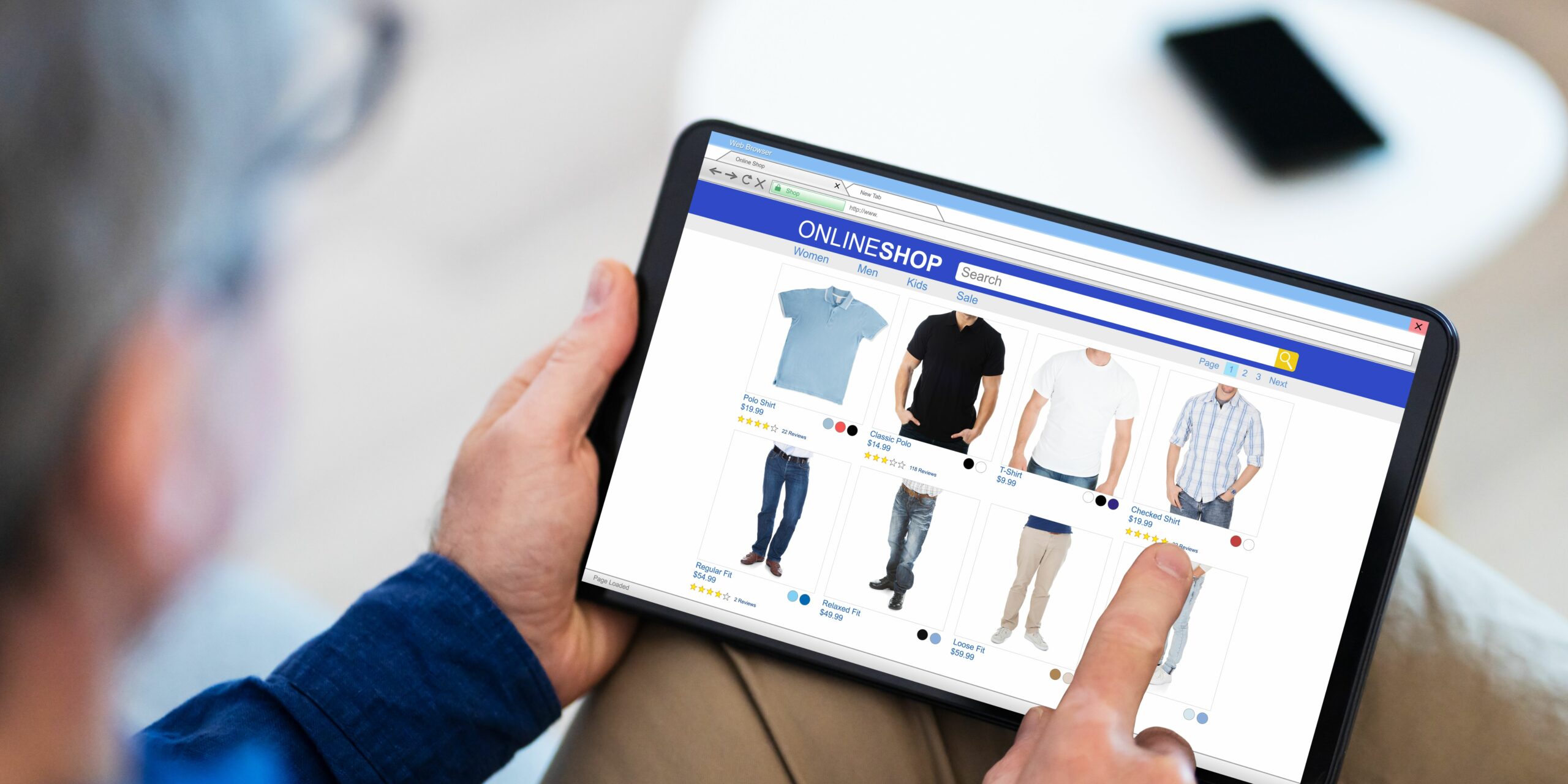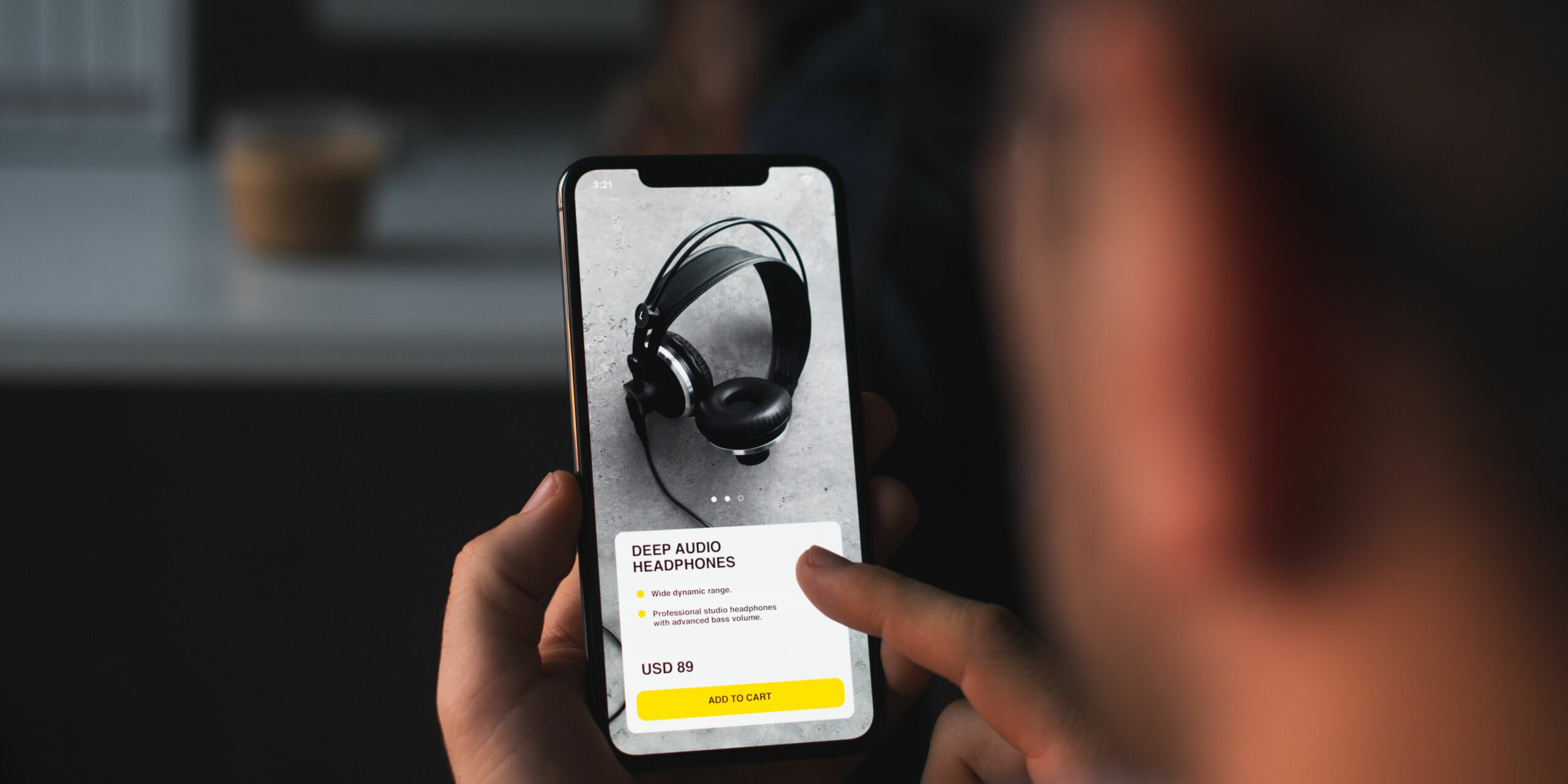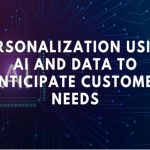 Brands can now customize customers’ buying experiences based on their preferences and real-time online surfing patterns thanks to artificial intelligence (AI) and automation. Personalizing Retail with AI makes in-store and online shopping experiences evolve quickly.
Brands can now customize customers’ buying experiences based on their preferences and real-time online surfing patterns thanks to artificial intelligence (AI) and automation. Personalizing Retail with AI makes in-store and online shopping experiences evolve quickly.
In today’s retail environment, individualized shopping experiences are important for consumer engagement, retention, and loyalty. Brands can now make every purchasing transaction relevant and enjoyable through customization. In comparison, AI provides smooth experiences that satisfy customers that they’ve made the suitable buy repeatedly, and personalization ties to more excellent conversion rates and product sales.
What is Retail Personalization?

Retail personalization is a method that considers every stage of a customer’s purchasing process and offers each customer a distinctive experience based on their current intent, past browsing and purchasing patterns and insights from analytics technologies.
Retail personalization strives to serve each person based on their requirements and behaviors because every path to purchasing is unique. This is by gathering information about your consumers, such as their location, browsing history, and gender. And they are accomplished by analyzing such data to ascertain the customers’ interests and then providing pertinent, customized customer satisfaction based on that analysis.
Introducing AI-powered personalization
Every customer receives a unique experience designed for more engagement and higher conversion thanks to AI-powered retail personalization. Each buyer sees a different, dynamically tailored representation of the eCommerce site from the first click. Next, this experience is made widely available to every shopper throughout all touchpoints and channels.
AI-driven personalization customizes a brand’s marketing messages, content, products, and services using machine learning, natural language processing, deep learning, etc. With the help of this technology, organizations may engage with customers in new ways that lead to more profitabe customer journeys.
Good data: the prerequisite to personalizing retail with AI
Data is a crucial component of every retail operation. Therefore, retailers must take the lead in its creation, management, and implementation. The basis for inventory management is also data. Data is vital to the inventory management cycle since it guides decision-making. The accuracy of data is required from the beginning to guarantee that judgments made later in this process are appropriate and timely.
Data must be exact and accurate for every stage of the retail process. Yet, because a team generated and managed it, it is subject to mistakes and inconsistencies. Here is when AI enters the picture.
Shopper profiles
Retailers can use this database to generate shopper profiles for each customer. Shopper profiles record visual preferences for color, design, and shape. Additionally, it can record non-visual preferences such as brand, category, and price to develop a thorough picture of each unique buyer.
The three data types that make up a shopper profile are behavioral clues, transactional data, and demographic data. It offers visual merchandising signals and helps buyers decide on styling and the inventory they will purchase for the upcoming season.
Contextual Shopper Intelligence
Using a range of indications, computer vision-based dynamic retail personalization identifies customer intent. The algorithms can learn more about a customer’s particular attribute preferences with each hit on a product. This makes it feasible for the engine to correctly map to buyer intent and highlight the most relevant products utilizing real-time customization when combined with prior behavioral patterns recorded by the engine.
Even when a customer wants to make an “unexpected” buy for a present or a special occasion, dynamic personalization combines historical and real-time data to give the right product to the appropriate shopper at the perfect moment.
Personalizing retail with AI across the entire shopper journey
You can offer the same personalization in your e-commerce approach with the help of modern technology and some innovative thinking.
These are some strategies for satisfying retail personalization throughout the shopping experience.
1. Homepage Personalization

Three suggestions can help merchants improve product discovery by 4.5 times:
- Your top picks or the top choices for first-time buyers.
- Personalization trending or Trending Now, popular with new customers.
- Recommendations based on past browsing.
2. Category Page Personalization

Shoppers seeking a particular type of goods but still knowing the precise one they intend to purchase might visit category sites. Global suggestions like “Most popular in category” can be used for a new customer. Personalized sorting will make it easier for repeat customers to quickly find the products they are interested in.
3. Product Detail Page (PDP) Personalization

Shoppers interested in a specific product or its features get to the product description page. When a customer favors a particular product, it can raise the average order value (AOV) by suggesting complementary items worn or bought together. Alternatively, AI may recommend related products or products with aesthetically similar designs if the customer loves a few product features.
4. Cart Page

When customers place things in their shopping carts, they make it evident that they intend to buy them. Here, The AOV for fashion retailers may increase by presenting clients with products usually purchased together. If a customer returns, this can be tailored based on their profile. To improve the odds of conversion, the customer can also be recommended similar items.
5. Post checkout

The store may display other products after the customer purchases on the website to persuade them to make additional purchases. Customers can find different effects on the website with the assistance of global suggestions like Trending products.
VueX: An AI-powered personalization platform
VueX, an AI-powered retail personalization tool, aims to assist eCommerce teams in managing the enormous effort of developing customized customer journeys that spur development.
Retailers may select the personalized product recommendations engine tactics they want to employ on each page, for each consumer category, with only a few mouse clicks. The AI algorithm is modifiable and dependent on the company. Retailers have complete control over the appearance of the recommendation on the website (template). They can choose how many products must be displayed and add labels and CTAs, among other things. A template might have multiple recommendation strategies for retailers.
The intuitive design makes it easy to make judgments based on data. Retailers have the option to A/B test each journey before scaling it. Tests run until statistical significance is reachable and tend to quantify the influence on particular KPIs.
4 Ways AI is Personalizing the Retail Customer Experience
Customers can now enjoy a fully automated shopping experience thanks to AI. It can operate independently of human intervention, giving customers greater control over purchasing. These are four ways that AI will personalize the retail sector and, as a result, change how customers interact with brands.
1. Anticipating Customer Expectations
The best strategy to provide enhanced customer experience is to anticipate their needs and deliver their preferred products and brands at the ideal time and location. Artificial intelligence can gather information and foresee customers’ requirements by using their search or browser history, interactions on social media, visits to physical stores, etc. To provide compelling browsing experiences, retailers can easily track what is in stock and design superior product selections.
2. Enriching In-Store Experiences
Providing friendly customer service, creating an engaging environment, and having a quick checkout are just a few ways to draw in new clients and keep them coming back. These four ways show how AI might improve in-store experiences.
i. Navigation while Shopping
Robots or kiosks with AI capabilities can now assist customers in finding products in stores by responding to touch screens or natural language speech queries.
ii. Virtual Shopping Assistants
AI-powered virtual assistants can respond to client questions and offer data-driven recommendations whenever customers need them. Using data from a customer’s profile, past purchases, search queries, etc., artificial intelligence (AI) can develop product recommendations.
iii. AI-driven AR
Several retail establishments offer virtual trial rooms, makeup applications, or productivity apps that utilize AI-powered Augmented Reality interfaces to allow customers to test things without personally trying them on. As a result, the buyer can break the cycle of buy-try-return by making a more informed buying decision.
iv. Smart Checkouts
A few businesses have developed shopping carts with cameras that can create orders, calculate customer purchases, and accept payments made via a mobile device. Customers will save time and enjoy better service if there is less friction, no lines, and quick checkouts.
3. Personalized Recommendations
To know customers’ interests and preferences, AI analyzes their browsing history, page clicks, social activities (likes, shares), previous purchases, time spent on a page, location, etc. Product recommendations can also be made using AI based on prior purchases or similar products. Customizing web pages and other aspects can also meet a customer’s wants.
4. Efficiency in Customer Service
In customer service, artificial intelligence dramatically reduces wait times and lowers costs. Real-time customer service will enhance their perception of value and contribute to a great user experience.
How does AI help in the retail industry?
Artificial intelligence (AI) has established new opportunities for the retail sector, from after-sales service to procurement. Seeing the potential advantages of AI, many executives in the retail industry are utilizing it to its fullest potential.
Artificial intelligence is the ideal tool for understanding consumer demands and making pertinent product recommendations to them. Small businesses’ POS systems can incorporate AI to help them expand their company rapidly.
In addition to helping clients with their needs, artificial intelligence can take the salesperson’s job. Your retail company can create an effective and engaging conversation procedure using artificial intelligence. The most efficient method of communicating with clients is through chatbots. Retail business owners can use artificial intelligence (AI) in their business plan to comprehend the pricing of competitors and the cost of manufacturing and provide the best price. The best price for customers and suppliers can be determined by AI analyzing all pricing methods.
How to effectively use AI technologies to personalize customers’ buying experience?
With the help of AI, you can better understand your client’s needs and preferences and use that information to customize their experiences and entice them to return. AI can help you better understand your consumers and their choices by evaluating data such as search history, purchasing habits, and demographics. Your ability to personalize recommendations, focus your marketing efforts, and develop more focused promotions will also be made possible.
By handling various consumer inquiries and giving customized responses, chatbots and virtual assistants can assist you in offering more individualized customer care.
AI can help you personalize your eCommerce platform by letting you to classify your customer base and create customized query results, recommendations, and landing pages.
AI may assist you in making more innovative pricing and restocking decisions, enhancing profitability by assessing customer data and market dynamics. By letting customers to search for things using pictures or virtually try on items using augmented reality, AI-powered visual search and virtual reality can help you create even more individualized shopping experiences.
How can businesses use AI to personalize customer service?
Chatbots can recognize the customer’s demands and offer personalized solutions that address their issues. Consumers can ask questions, make requests, and receive customized responses based on their unique preferences and history through speech interactions with voice assistants, and it helps provide individualized customer care. Artificial intelligence (AI) can foresee client demands and proactively provide support.
AI can be a potent tool for enhancing customer loyalty, increasing customer pleasure, and personalizing customer service. Yet, employing AI ethically and openly is crucial, with the proper safeguards in place to ensure client security and privacy.
What are some of the best use cases for AI in retail?
The development of AI and machine learning in retail has significantly changed how conventional retail businesses function. Smart Retail Experiences, biometrics and Product Recognition, Concierge Services, and Merchandising are some of its most notable applications. Moreover, the retail sector is seeing a rise in the adoption of in-store retail technology that boosts productivity in physical retail, increases supply chain effectiveness, and leverages technology to personalize retail.





